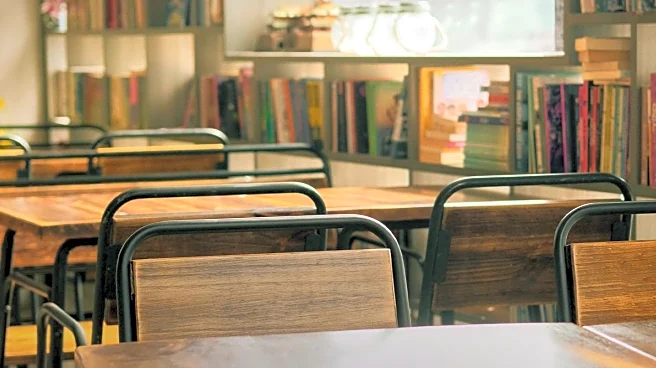What is the story about?
What's Happening?
In South Korea, a cultural phenomenon known as 'Cagongjok' is impacting cafes, particularly in areas with high student populations. This term refers to young individuals who prefer to study or work in cafes, often setting up elaborate workstations with multiple electronic devices. This trend has led to challenges for cafe owners, who face difficulties managing space and resources due to prolonged occupancy by these patrons. Starbucks Korea has responded by introducing nationwide guidelines to address extreme cases where customers bring in desktop monitors or leave tables unattended for extended periods. The guidelines aim to create a more comfortable environment for all customers, although they do not involve asking patrons to leave. The issue has sparked mixed reactions, with some welcoming the move as necessary, while others view it as an overreach.
Why It's Important?
The situation highlights the broader implications of how public spaces are utilized in urban settings, particularly in densely populated areas. For cafe owners, the trend presents a financial challenge, as prolonged occupancy by a few customers can limit turnover and reduce potential revenue. This is especially significant in high-rent areas like Seoul's Daechi neighborhood. The guidelines introduced by Starbucks could set a precedent for other businesses facing similar issues, potentially influencing how public and semi-public spaces are managed. Additionally, the trend reflects changing social dynamics, where cafes serve as alternative study and work environments, indicating a shift in how younger generations engage with traditional spaces like libraries or offices.
What's Next?
As the guidelines are implemented, it will be important to monitor their effectiveness and the response from both customers and other cafe chains. If successful, similar policies may be adopted by other businesses to balance the needs of different customer groups. The ongoing public discussion around 'Cagongjok' may also lead to broader societal changes in how communal spaces are designed and utilized, potentially influencing urban planning and the development of new types of public spaces that cater to diverse needs.
Beyond the Headlines
The phenomenon of 'Cagongjok' raises questions about the evolving role of third places in society, particularly in urban environments. As cafes become more than just places for socializing, they highlight the need for spaces that accommodate both social and solitary activities. This trend may also reflect broader cultural shifts towards more flexible and informal work and study environments, challenging traditional notions of productivity and space utilization.
AI Generated Content
Do you find this article useful?













